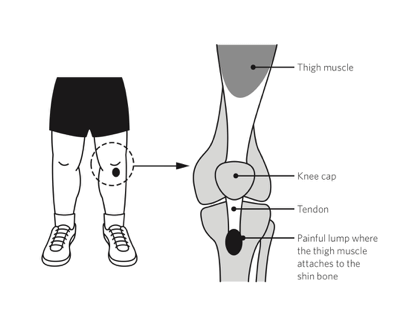What is Osgood Schlatter Disease?

Osgood Schlatter Disease (OSD) is a painful knee condition most commonly seen in growing adolescents and children, when bones, muscles and tendons are rapidly changing in the body, therefore resulting in growing pains under the knee cap. OSD is an overuse injury rather than a sudden injury to the knee. OSD is more prevalent in young boys aged (13 – 15 years) with girls typically developing OSD earlier around 11 – 13 years, with children who participate in sports at an increased risk.
In OSD repetitive jumping, running and bending of the knee can cause a small injury to the growth plate located at the top of the shin. Attached to this bony lump is your strong thigh (quadriceps) muscle. As the quadriceps pulls on the growth plate, separation of the growth plate occurs causing irritation and inflammation. Osgood Schlatter Disease symptoms often present as a painful and prominent bony lump on the knee cap. The pain experienced is often worse with activity and settles with rest. Clinical examination or a physiotherapy knee assessment is used to diagnose OSD with invasive procedures and imaging not needed.
Knee pain management and Osgood Schlatter Disease treatment typically includes activity modification with the reduction of participation in activities, which exacerbate pain. Symptomatic knee pain treatment may include applying ice to the area of pain and in some cases the use of anti-inflammatories. Chiropractic and physiotherapy treatments and stretching exercises for the quadriceps and hamstring muscles can also provide knee pain relief and act as a preventative from reoccurring symptoms. Tightness in the quadriceps may exacerbate OSD so it is important for muscle imbalances to be addressed. Biomechanical abnormalities such as any differences within the body will be addressed with treatment to limit the ongoing symptoms of OSD.
Pain associated with OSD stops once growth has finished, while the bony prominence will remain. Early intervention is important to manage symptoms and allow individuals to continue participating in sport.
